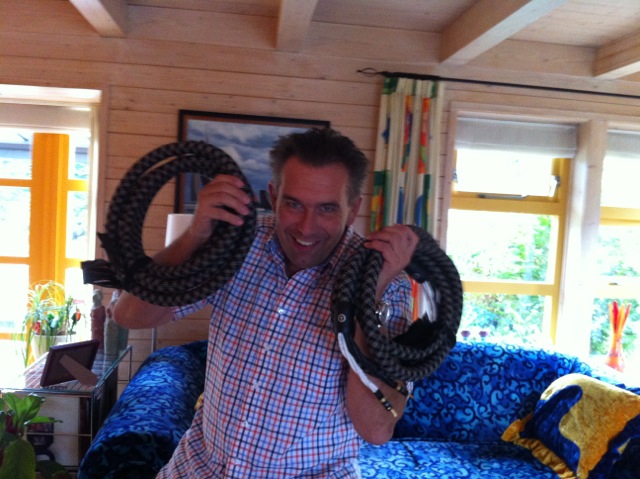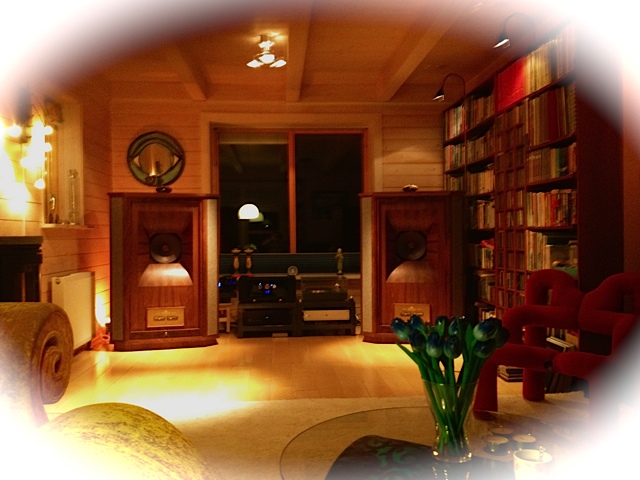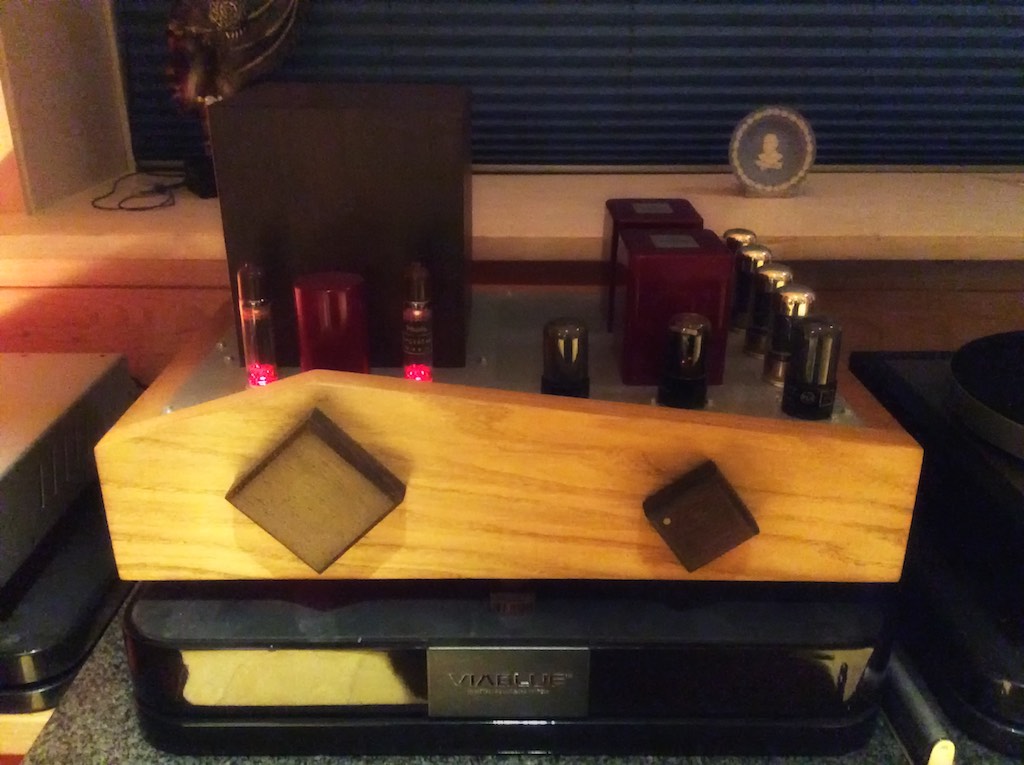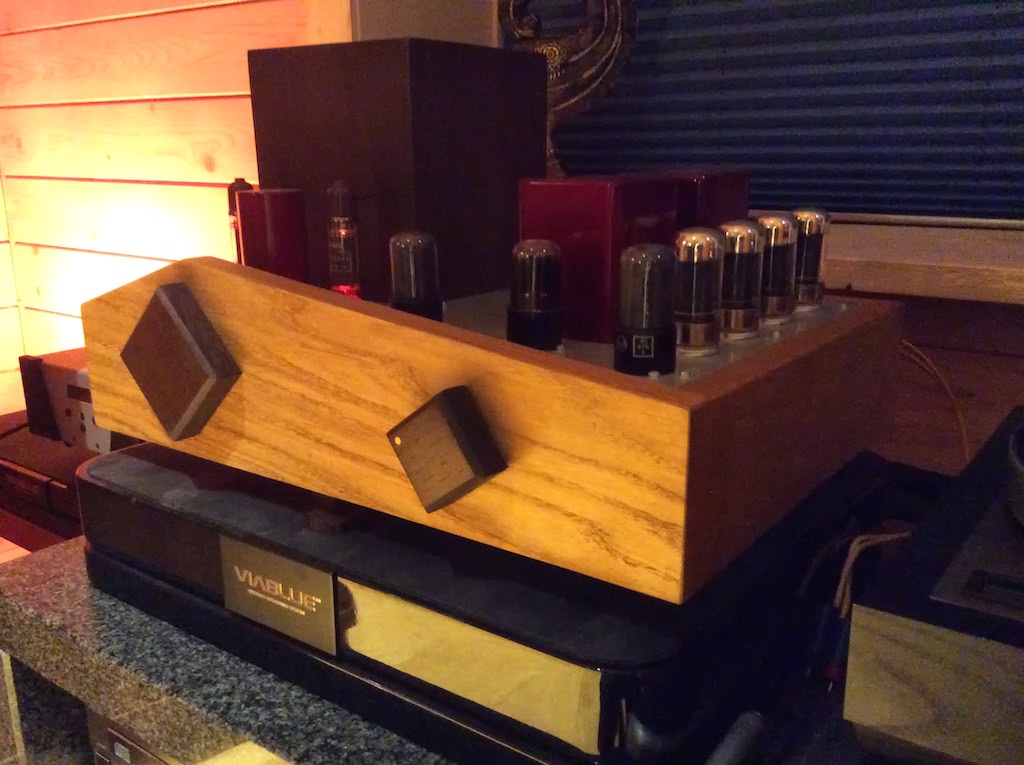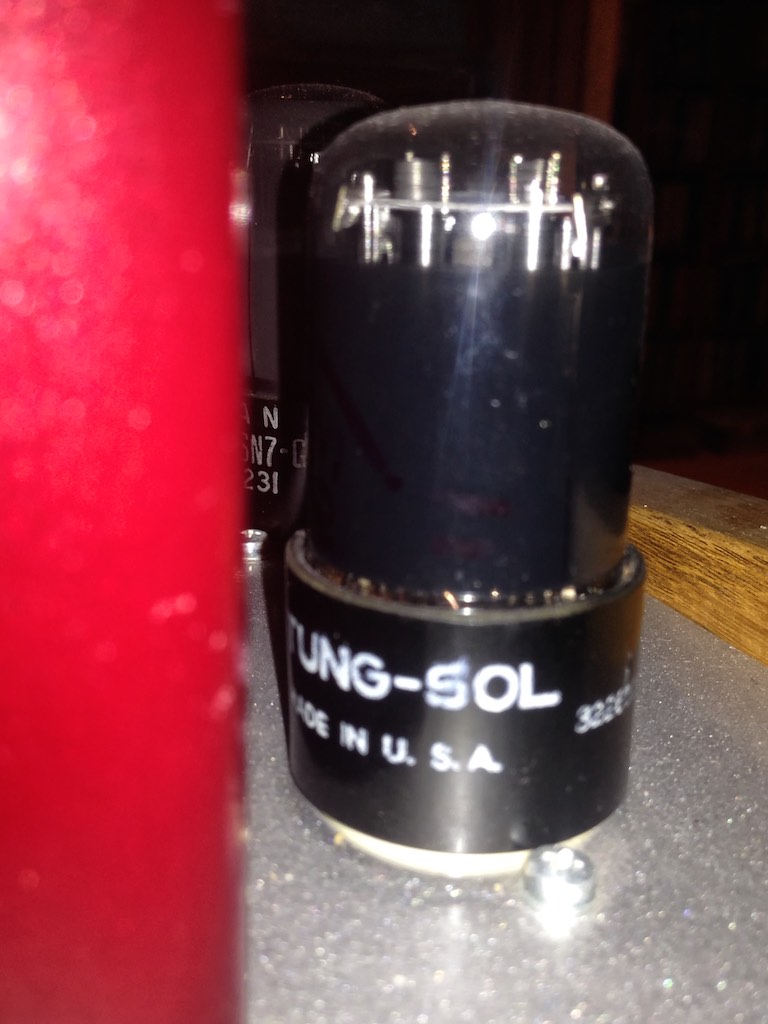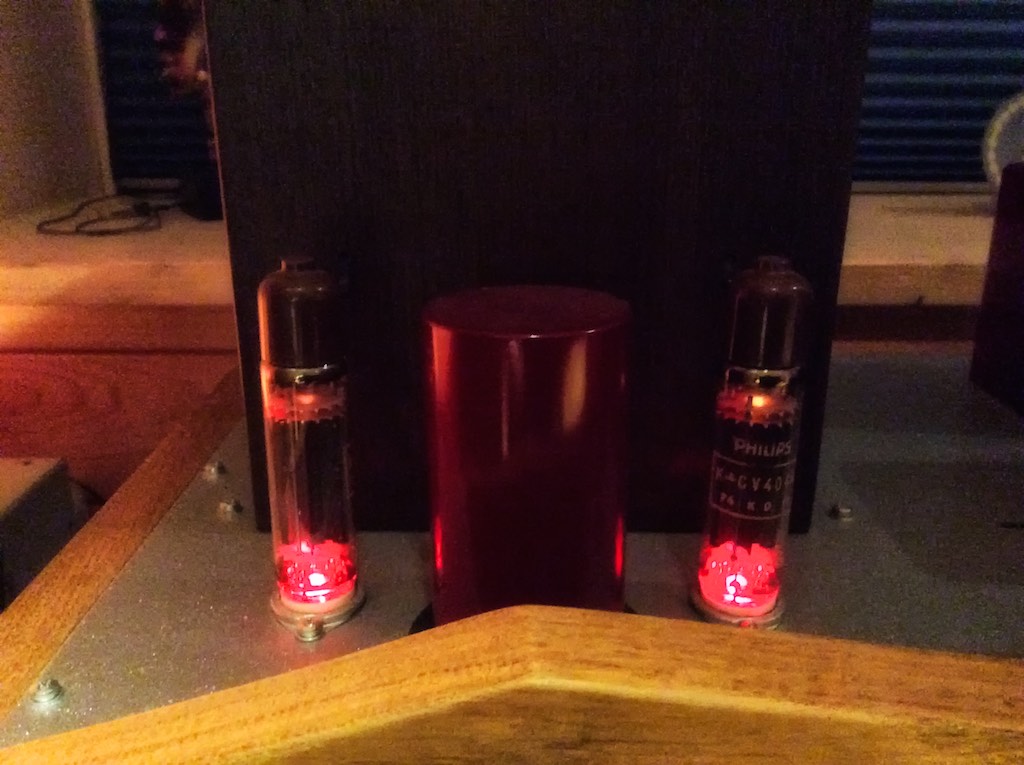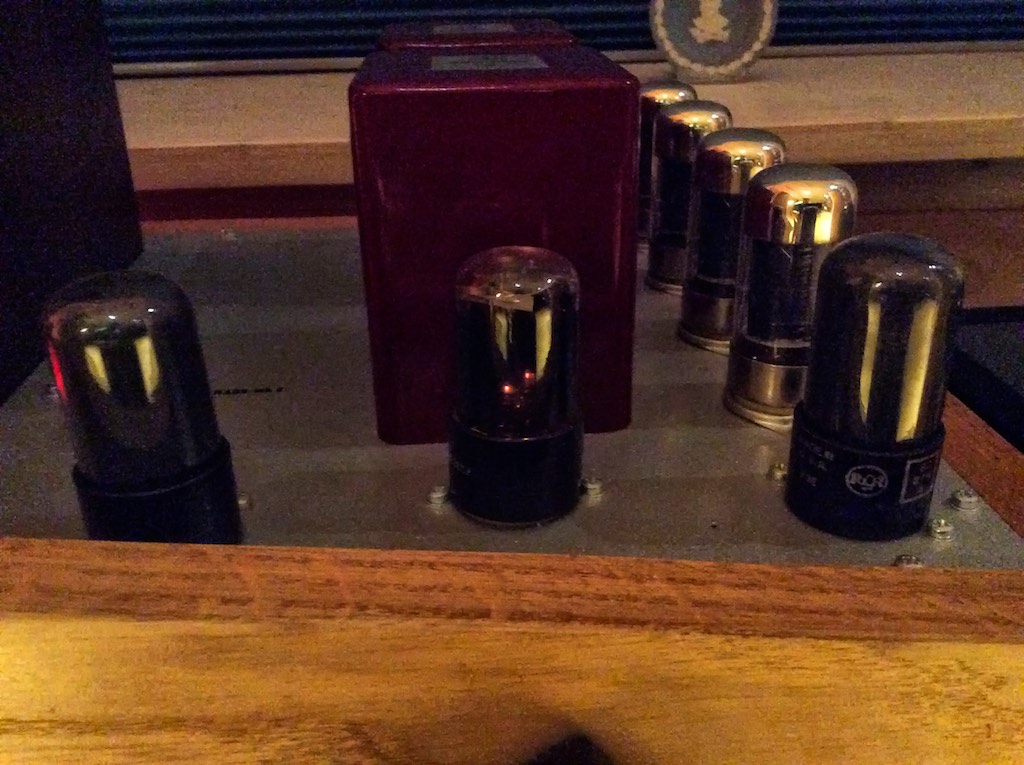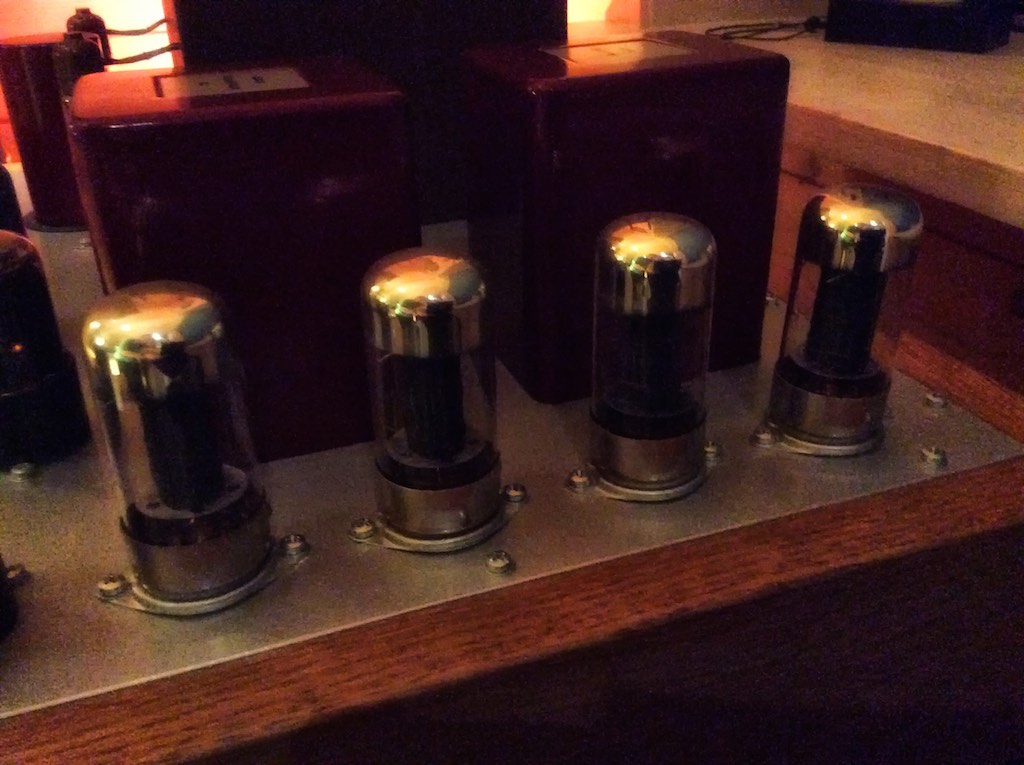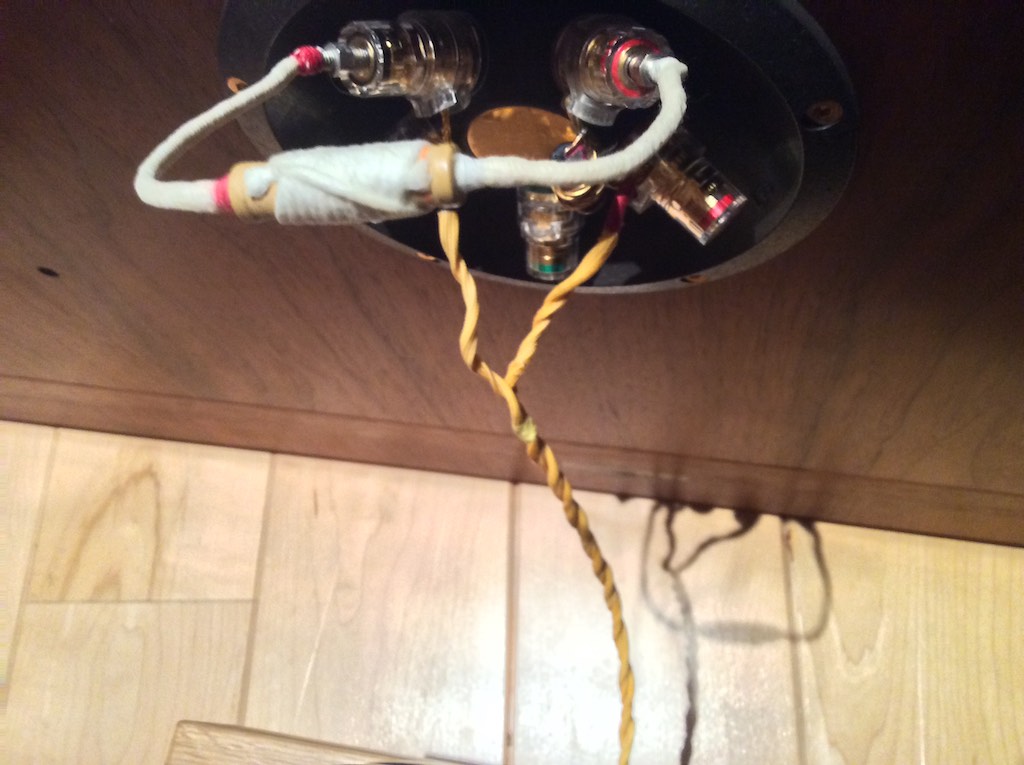It's always a pleasure to hear from Siedy in the Netherlands. If you've been following along the conversations here at Jeff's Place you'll recognize Siedy as the gentleman responsible for me becoming aware of the powerful and musical ASR Emitter II Exclusive Version Blue amplifier that was developed by Mr.Friedrich Schaefer in Germany.
Siedy used the ASR 'Blue' on his Tannoy Westminster Royal SE loudspeakers and has really enjoyed the musical combination they provided. I too totally enjoyed the solid-state 'Blue' amplifier during the review period, and it was the first solid-state amplifier that I thought could have displaced vacuum tube amplification from my system - it was that good.
That's right, Siedy has exceptional taste in audio, so when he told me about the Chaos reigning in his hi-fi system I payed close attention. Not only was Chaos reigning in Siedy's hi-fi, it has permanently displaced his ASR 'Blue' amplifier - that's amazing!
The type of Chaos I'm talking about is not a condition of disorder or confusion in Siedy's hi-fi, but just the opposite, he now has an artisan vacuum tube amplifier named 'Chaos' in his hi-fi that takes the chaotic input signal of a source component and transforms it into an incredibly engaging musical event.
The Chaos is a small 4 watt vacuum tube integrated amplifier that has displaced Siedy's massive 250 watt ASR 'Blue' as his amplifier of choice. I was amazed to read this, and I had to read it a couple of times to make sure I read it right!
Here's what Siedy told me about Jan's 'Chaos' powering his Westminster Royal SE loudspeakers:
"The reason why the designer called the amp 'Chaos’ is related to the chaotic nature of an audio input signal. The amplifier is designed without any form of feedback. So the chaotic signal comes in, musical bliss comes out of it, and it sounds terrific. This amp is incredibly fast and time coherent, and in a warm and organic way!
I see how amazed and shocked people are when they are listening to my system with the Chaos amplifier. It sounds so spacious, so three-dimensional, so lifelike, so very human. People cannot believe how this little amp (4-5 watt) makes this possible.The sound of this amp is presented completely free from the Westminster! The music comes in the room very 'nearby and present’ as if the music is projected in and near your head! I like that very much.
Sometimes I have the feeling that people have to get used to this kind of listening! Funny! It is just so difficult to get such an holographic and natural sound! It is far easier to influence how it sounds than to realize WHERE it sounds."
The Chaos is purpose-built as a vacuum tube integrated stereo amplifier, and drives Siedy's Tannoy Westminster Royal SE loudspeakers full-range. I was surprised when Siedy told me it drove his WRSEs full-range, and that the Chaos' bass performance equalled that of his ASR! With 4 watts!
Siedy's new Chaos 4 watt vacuum tube integrated amplifier was designed by Jan Hut in the Netherlands, who has been designing amplifiers for over 30 years. Siedy told me that Jan made a big change in how he designed amplifiers about 10 years ago, when he decided to build a tube amp with the most musical components (and not just the most expensive boutique parts), using all natural materials wherever possible (instead of synthetic materials, which Jan says degrade musicality), the shortest signal path possible, and a zero feedback design. The results were spectacular with Jan's new design approach, and he's never looked back.
Siedy tells that with his Chaos, "This results in an amplifier that sounds holographic and naturally lifelike."
Siedy told me, "The Chaos is a zero feedback triode design, uses all carbon resistors, and MKC polycarbonate capacitors. The output tubes are 7C5 and the input tubes are carbon-plated round-anode Tung-Sol 6SN7. The power supply is tube rectified and uses three chokes and a MKV capacitor. The power transformers and chokes are pertinax core Mullards from the 1960s. The volume potentiometer is a Alps 'Black Beauty' type. "
In a conversation with Siedy, Jan told him:
"The idea behind the Chaos amp is completely different from most others. At the base of all amp designs stands engineers who learned to develop amplifiers the same way I did. That’s because we all had teachers that think the same way on how you design amplifiers. Mostly they think that more is better, and a better measuring result will also be better to listen to music with. Even though measuring instruments do not know what better sound means, we think they do. The problem occurs in the feedback loop. An amp without feedback runs only one signal, the audio signal. It’s not all that simple, but for now it will do. If you amplify that the right way it appears at the output, then goes to the speaker, and then back to the power supply. When you apply global feedback the amps sees more signals to work with. First the original input signal, and then the amplified signal that is sent back by the loudspeaker. The signal is passed along by the amp with a little delay and, and the amp has made little mistakes during the amplification process, which people try to compensate for by adding feedback, but then phase problems become an issue because the amp is comparing and compensating for these two signals. An average amp does not have any intelligence to do so, and it has no ears either, so new mistakes are made and enter the amp by the feedback and so on."
"The big bass signals are strong and stay rather unaffected, but the very small ones are affected, the ones that give us a part of the big spacious sound and three-dimensional picture. There is also another signal disturbing the audio signal when applying feedback, and that is the signal the speaker generates. The damping of the amp has to take care of that through the feedback loop also and so a third signal appears at the entrance of the amp and it tries to make the best of it. When you start adding even a small amount of feedback you can hear the spacious soundstage become smaller. So what we are asking is what’s worse, letting the amp make a few mistakes we can’t hear, or to introduce a lot of other signals by means of the feedback that the amp then has to deal with."
"The amp has its hands full just amplifying the audio signal, let alone all these other signals that it doesn't understand. Also, feedback costs a lot of gain, and you have to compensate for that by means of extra gain stages. That puts more parts in the signal path and creates the possibility of the amp making for errors that you have to compensate for, and so on. There are no individual parts that can make the music better, so its best to use as few as possible, and then let the amp do what it does, making music."
Siedy also told me, "All the materials in this amp are selected based on their ability to help the music flow and let more of it come through to the listener. We believe that in the signal of the music there is a lot of hidden emotion and feelings. We call this ‘structure information’. Hidden in this structure information is all of the 'code' of how the composer intended the music should touch the listener on an emotional level. For example, when you use materials like certain types of plastics the signal will not come through intact, the plastic changes the ‘structured information’ of the signal. The sound becomes thin, aggressive, etc."
As we all know, cable choice is very important for voicing the final sound of the system, and with the Chaos amplifier Siedy and Jan have found gold-plated copper cables with cotton insulation to provide a warmer and more natural sound that is very spacious.
(You can read here my review of a pair of Tempo Electric gold interconnects to get an idea of tonal qualities of various wires' tonality. While I haven't tried gold-plated copper as a conductor, solid gold wire is rich and warm sounding, and interestingly, even before I got this report from Siedy I was wondering what adding a little gold wire to my Duelund high-frequency crossover might do. Now I'm really curious!)
Many thanks to Siedy and Jan for sharing their artisanal audio approach! Beautiful!





